Follow us on Telegram for the latest updates: https://t.me/mothershipsg
Imagine a scene straight out of "Snow White and the Seven Dwarfs", where a doe approaches you, close enough to be touched.
A man in Singapore recently had a fairytale encounter just like that with a Sambar deer.
Within touching distance
On Apr. 8, photographer Tan Yong Lin posted on Facebook about his fascinating encounter with the doe that took place about two weeks before.
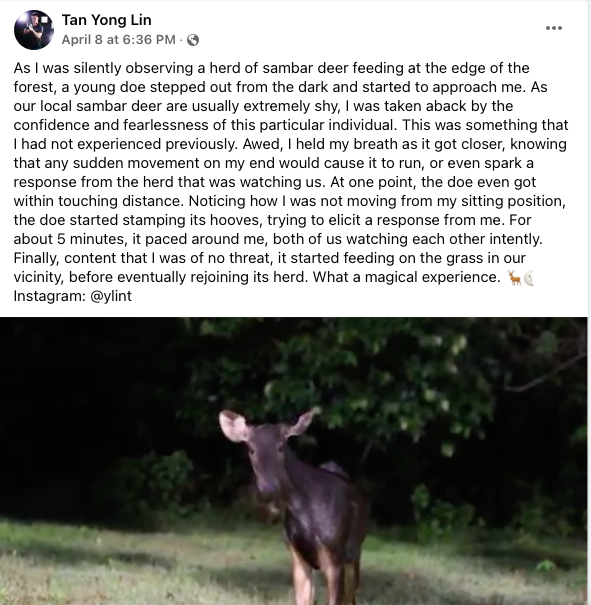 Image via Tan Yong Lin/ FB
Image via Tan Yong Lin/ FB
Tan, who has been attempting to photograph the deer since 2022, responded to Mothership's queries, saying that he waited five hours to catch a glimpse of the Sambar deer herd that day.
On previous occasions, he would wait along public roads along the Central Catchment area, sometimes unsuccessfully.
That day, he managed to observe a herd of five deer feeding at the edge of the forest at the Central Catchment area.
He wanted to keep a respectful distance from the herd as it is "easily spooked by humans". To avoid scaring them off, he remained seated at the same spot "for hours without moving".
Eventually, a young doe got curious and approached him to investigate.
"This was something that I had not experienced previously. Awed, I held my breath as it got closer, knowing that any sudden movement on my end would cause it to run, or even spark a response from the herd that was watching us."
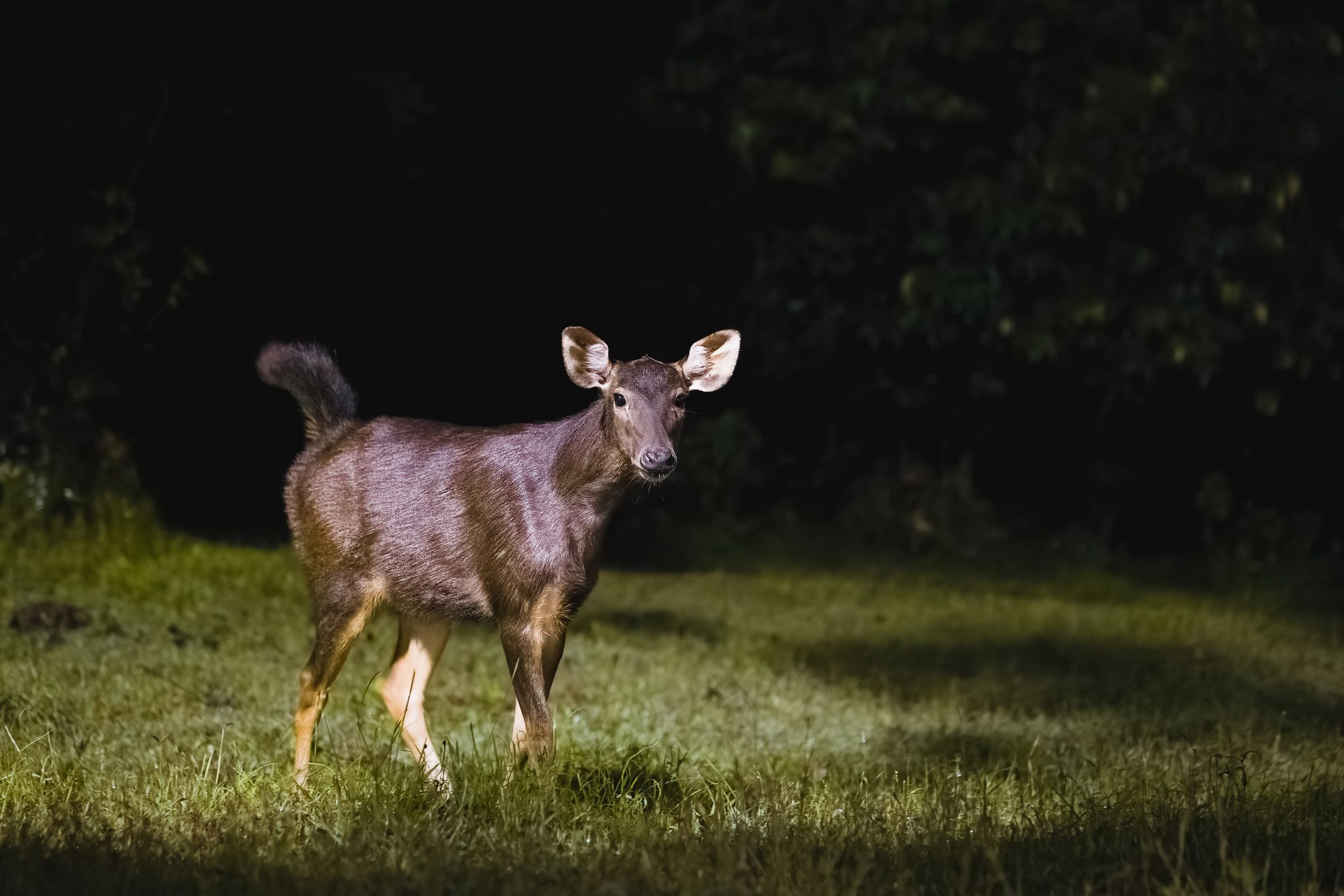 Image courtesy of Tan Yong Lin
Image courtesy of Tan Yong Lin
He noted that the deer came "within touching distance to sniff him", which was about a metre away. However, he refrained from touching it.
Shy creatures
In his Facebook post, Tan shared that local Sambar deer are typically extremely shy. He was thus shocked at the "confidence and fearlessness" of the doe.
The doe tried to elicit a response from him, stamping its hooves and pacing around him for approximately five minutes while watching him intently.
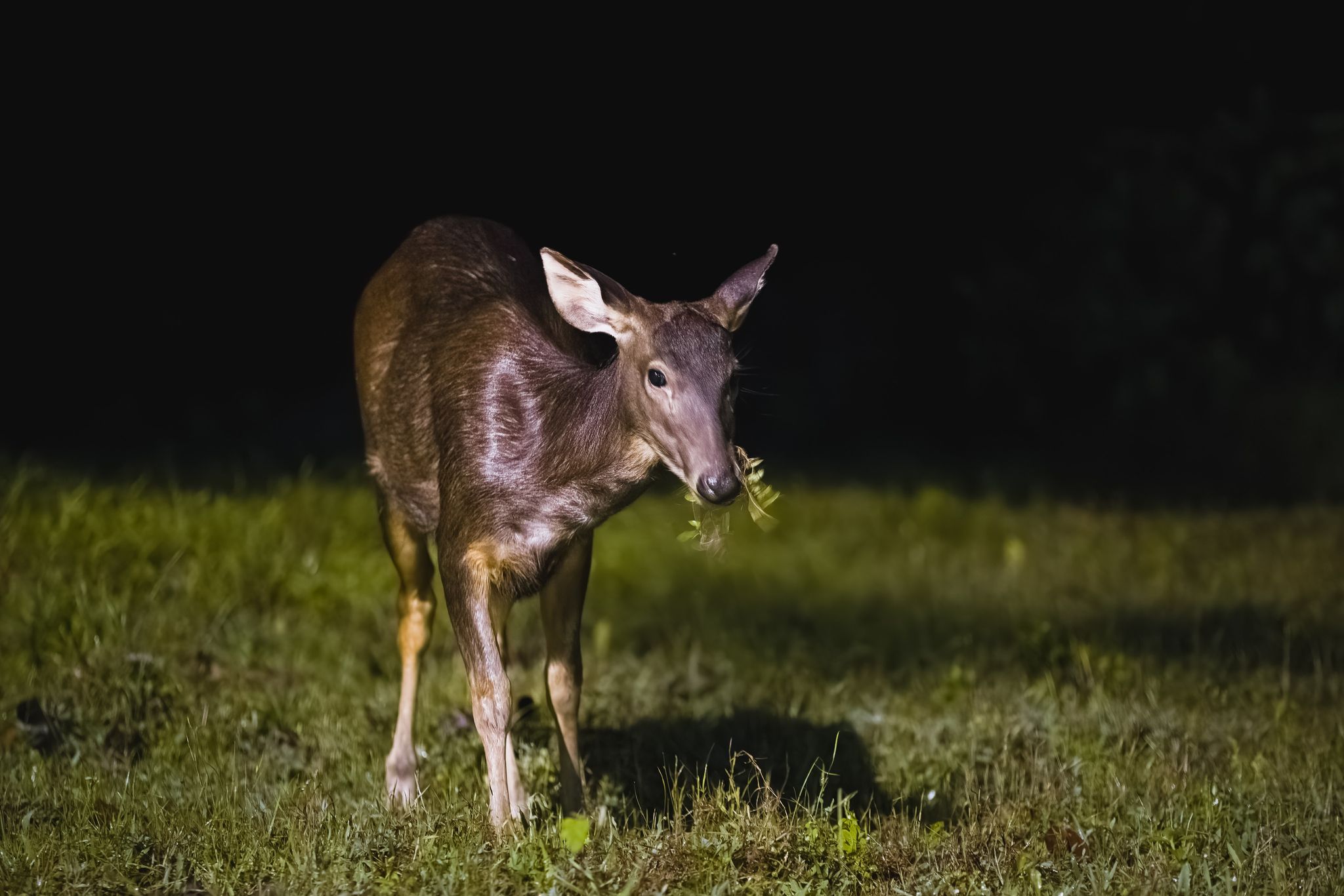 Image courtesy of Tan Yong Lin
Image courtesy of Tan Yong Lin
After a while, the deer apparently did not deem him to be a threat, and grazed on the grass around him for about 10 minutes.
The doe then headed back to rejoin its herd and subsequently returned into the forest.
"What a magical experience," Tan concluded.
Despite the once-in-a-lifetime experience, Tan believes that such wild animals should be observed from a safe distance and cautioned others against attempting to approach them.
Netizens' reactions
Many netizens were amazed by the encounter and expressed their wonderment in the comments section.
 Image via Tan Yong Lin/ FB
Image via Tan Yong Lin/ FB
 Image via Tan Yong Lin/ FB
Image via Tan Yong Lin/ FB
 Image via Tan Yong Lin/ FB
Image via Tan Yong Lin/ FB
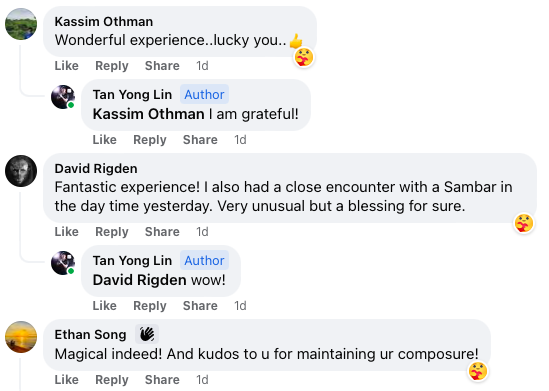 Image via Tan Yong Lin/ FB
Image via Tan Yong Lin/ FB
What are Sambar Deer?
The shy creatures were believed to have been wiped out in Singapore by 1950.
The Nature Society Singapore estimated in 1997 that there were three deer in the wild.
In 2021, the National Parks Board (NParks) put the number at around 15.
The animal is currently listed as a vulnerable species according to the International Union for Conservation of Nature.
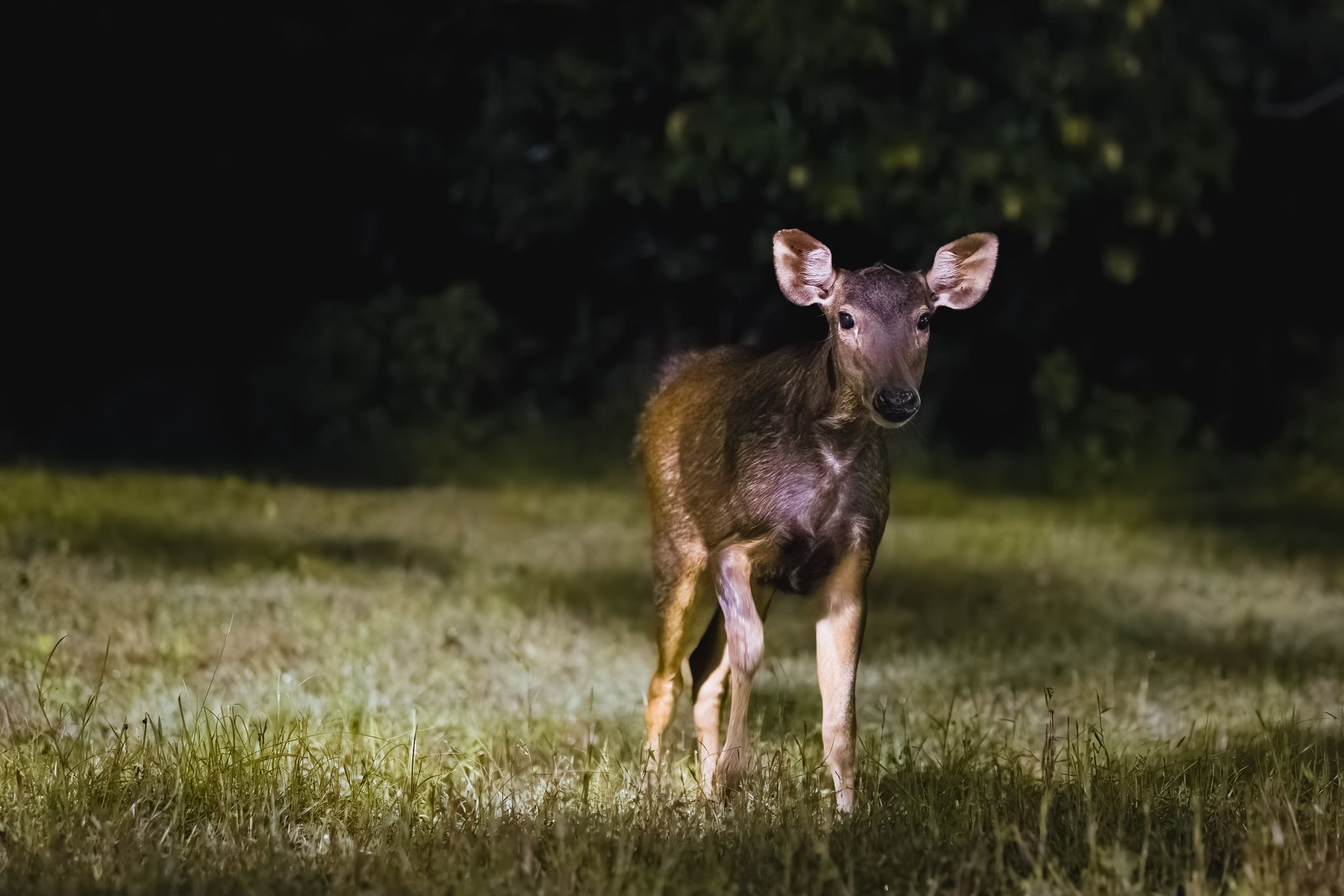 Image courtesy of Tan Yong Lin
Image courtesy of Tan Yong Lin
But a new February 2023 study has suggested that their population has been increasing in recent years.
The study said the population of sambar deer are increasing in some forested areas, such as the Central Catchment Nature Reserve near MacRitchie, as well as Bukit Timah.
The latest finding is derived from data including those from motion-activated cameras between 2009 and 2020.
The population in Mandai dropped sharply after 2016 after some 60ha of land was cleared to develop the new eco-tourism hub.
Increased sightings in MacRitchie and Bukit Timah suggested that sambar deer had moved to these areas, the report added.
According to NParks, Sambar Deer are one of the largest deer species in the world after the moose and the elk.
They live in wooded habitats and are most active at dusk and at night. In the daytime, they rest among thick vegetation.
They stay in small herds and communicate via foot stamping and scent marking.
They consume a large variety of vegetation such as grasses, leafy foliage, fruit, water plants, shrubs and trees.
All images courtesy of Tan Yong Lin.
If you like what you read, follow us on Facebook, Instagram, Twitter and Telegram to get the latest updates.
